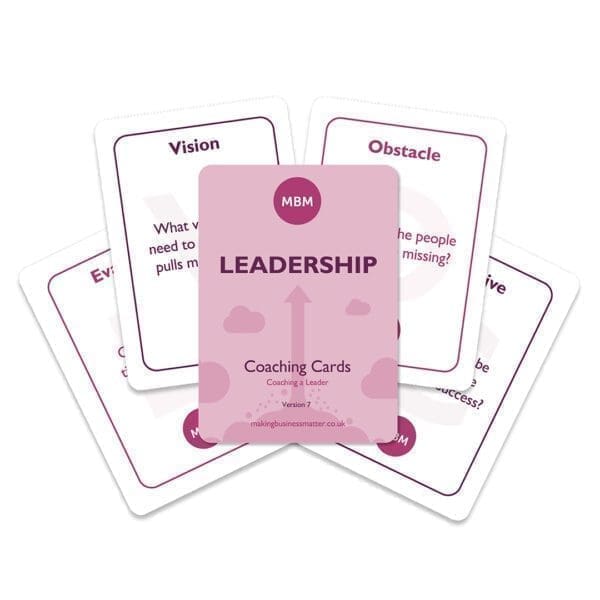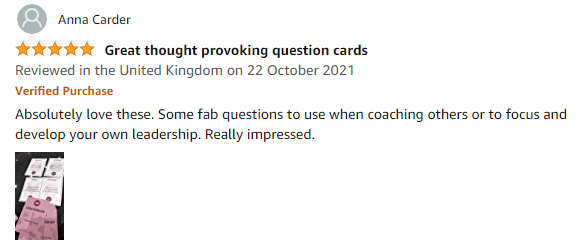Master These Methods and Transform Your Meetings
Facilitation techniques are important in business because they engage teams and individuals, and create empathy. Furthermore, they’re equally relevant in leading discussions to solve problems and generate ideas, as they are when you’re leading a team and explaining what you want them to do, or telling them about a new situation, as you do in change management.
Using facilitation techniques to talk things through and reach an agreement on the way forward, might feel like you’re taking up valuable time which might be better spent elsewhere. But don’t fall into that trap! Facilitation increases people’s commitment to achieving your shared goals. In fact, it’s widely recognised that facilitation techniques lead to reduced bureaucracy, better use of time, greater efficiency, and increased goodwill. So whatever your natural leadership style, they’re worth working on.
What Are the Basic 4 Facilitation Skills?

Before we look at the techniques, let’s think about the skills you need to have. Facilitation skills are ‘soft skills’ that people who have been working in business for some time may well already possess, but need to develop.
Gary Rush, an International Association of Facilitators Certified Facilitation Master, says the 4 essential facilitation skills are:
- Active listening
- Awareness of others and their behaviour
- Knowing how to provide a structured thought process
- Knowing “how to” move others to a consensus
The University of Pittsburgh’s website says effective facilitation involves:
- Presentation skills
- Attending
- Observing
- Good listening and questioning skills.
Put both insights together, and you’re all set to develop effective facilitation techniques.
What Are Facilitation Techniques?
Facilitation techniques are skills you use to work with a group and enable and support them in achieving your shared goals. Where the conversation involves processes the team need to follow, for sure, you could simply tell them what the job is and how to do it. However. your chances of securing their involvement and productiveness are better if you share the vision and engage them through facilitation.
Here Are Some Examples of Occasions When You Use Facilitation Techniques
1. Getting the team to ‘buy in’:
Facilitation involves and respects all contributions. It builds a shared sense of ownership and releases the potential of the group and its members. Also, it helps those involved to differentiate between the process – what’s happening in the meeting and the content – what you’re discussing.
2. Explaining, understanding, and committing:
Are there procedures to be explained and understood? Are there messages you need to put across about your product and service? Well, facilitation techniques will help you get people’s full understanding of why the procedures must be like that, and why the messages matter. In addition, you’ll engage them more, and importantly, hold their attention.
3. Brainstorming:
Facilitation techniques are also useful when you’re leading a brainstorming session or problem-solving meeting, where the other people’s contributions are what matters most, and it’s important to make everyone feel involved and entitled to have a say and be heard. This brings us to a seriously important point.
The Boss Can Also Be the Facilitator. It’s What Bill Gates Did at Microsoft

The person leading the meeting might be the one who leads the business, but in this situation, they’re acting as the facilitator. They’re still the boss and can step in at any time and take charge if they feel the need to give direction.
The story goes that Bill Gates was an autocratic leader when he headed up Microsoft. However, in situations where he needed the team’s input, like product development, he stepped back from giving commands. Instead, he used facilitation techniques to encourage his people and give them the confidence to come up with fresh ideas and develop them.
The point is, if you’re a naturally authoritative leader or manager, facilitation techniques enable you to park that side of you and show empathy and participative leadership. But as the leader, you must still judge how the conversation is going, and take the lead.


>> Leadership Skills Coaching Cards <<
Leaders and Managers Also Use Facilitation Techniques When They Engage in Coaching Leadership
Here’s how…
Trainers and coaches use facilitation techniques to help learners acquire, retain, and apply knowledge and skills. If they also work in the company, their ‘normal’ role will give them authority, but they don’t need to exert it in coaching. In fact, it makes a big difference if they don’t. Why? Well, it’s because it’s important for the ‘coachees’ to feel comfortable and receptive, so they fully absorb the information.
The trainer should focus on what needs to be communicated. Specifically, they introduce the participants to the content and encourage them to ask questions and talk about it. From there, they foster the discussion, take steps to enhance the experience for the learners, and give suggestions.
What Are the 5 Principles of Facilitation Techniques?

Looking at facilitation techniques to lead problem-solving meetings, these are the 5 principles identified by the Women in Retail Leadership Circle (WIRLC), the Philadephia-based community of women executives at leading US retailers and brands:
- Principle 1: Maintain neutrality
- Principle 2: Stand still in the storm
- Principle 3: Honour the wisdom of the group
- Principle 4: Hold the group’s agenda
- Principle 5: Be future-focused
If you’re leading the conversation, you may well be the boss, but you’ve called the team together because you respect their knowledge and you need to draw on it.
So, let’s explore the WIRLC’s 5 Principles of Facilitation Techniques:
Principle #1 – Maintain neutrality:
Start by being clear about the desired outcome and purpose of the meeting. Be equally clear about framing the topic, or the dilemma you’re addressing, guide the questions and then be neutral about the ideas that come up. In WIRCL’s words, this is about “leading from behind.” As the facilitator, you should own the process of the meeting – what happens in it, while letting the team own the content – what comes out of it. This way, you can let your team’s imagination take over and get creative.
Principle #2 – Stand still in the storm:
Getting new insights from your team needs them to come up with new thinking. Your job is to welcome this new thinking, even if things get a bit stormy in the moment. Welcome different points of view and perspectives without taking sides and, if different ideas aren’t emerging, find ways to welcome people into the conversation.
If individuals clash over ideas, stay with the conflict. Hear people out rather than deflecting, changing the subject, or moving on to something else. Teams don’t naturally want to stay in conflict, they have patterns of avoiding it, often at all costs. But as the Women in Retail Leadership Circle say, this is where the good stuff happens.
Principle #3 – Honour the wisdom of the group:
Trust that the team members between them have the knowledge and everything else they need to find solutions creatively and innovatively. When you trust in their collective wisdom, it gives them a sense of inclusiveness. There’s less need to control the conversation and less fear that someone will be disruptive and derail it.
Principle #4 – Hold the group’s agenda:
Be mindful of serving the group’s ‘agenda,’ if it becomes apparent in the conversation. Is there resistance to a decision, or reluctance to move forward to another topic you want to discuss? If so, you might be encountering the team’s “emergent agenda” — meaning, what’s concerning the team members at the moment? It might be a subject that’s difficult to discuss but needs to be talked about, so the team can move forward. Or, it might have more to do with the team’s dynamic – how they get on, than the topic at hand.
If you realise the group does have an emergent agenda, you need to focus on what will serve them best in the long run, not what you can accomplish at that moment. Ask yourself, “How can I best serve the group?” and “What does this group really need right now?”
Be ‘present’ in the conversation, but also think about the next step after this.
This brings us to the last Principle:
Principle #5 – Be future-focused:
To get the most from your meeting, have a plan that includes questions that prompt the team to think beyond the current dilemma and imagine what’s possible. After all, this is why you’ve got the team there in the first place.
What Are the 4 Different Types of Facilitation Techniques?

Ryann Hoffman at Mural, the online team collaboration platform, identifies four types of facilitation. These are:
1. Facilitation Scaffolding:
This is the ‘best practice’ established teams have in place that allows them to do their best collaborative work without a facilitator. It includes:
- Creating and sticking to effective agendas.
- Assigning and completing prep work before meetings.
- Making time for and documenting the next steps and agreeing on responsibilities.
Teams like this are effectively self-facilitating, though you may need to step in sometimes and do some of our next type of facilitation:
2. Light Facilitation:
The facilitator is actively listening and attentive to the group’s purpose, energy, needs, and next steps. The experts say this is usually enough for most kinds of collaborative work. It’s not that important who leads it, provided the team recognise their authority.
3. Strong Facilitation:
This is more intense. With practice, honest feedback from participants, and maybe some self-directed study, most people can become practitioners of strong facilitation. You’re able to make others feel heard and safe in meetings – and you always manage to get through your agenda on time.
4. Expert Facilitation:
This is done by seasoned professionals, who are often external specialists and get called in to help when a neutral facilitator is required, or there’s no one in the company with expertise in that area.
Here are some examples of when you need an expert facilitator:
- There’s extreme passion or discord around topics.
- The meeting is lengthy or complex.
- There are challenging group dynamics, such as participants who dominate and intimidate others.
- The meeting or its outcome is highly political.
- There are known rivalries between parties attending the meeting, and the internal resource has to take sides.
- The meeting requires specialised modelling, diagramming, or analysis techniques.
What Are the 6 Ways of Facilitation?

Meeting, workshop and training template provider GroupMap suggest the following ways to facilitate a straightforward meeting:
1. Start With a Quick Check-in:
This might make some people feel awkward, but it makes everyone pay attention to the meeting and to one another. At the very least, ask people to introduce themselves, and say who they are. Check-ins only take a few minutes and can result in substantial benefits in engagement. They allow people to get to know each other better and ensure everyone’s mentally ‘present.’
2. Promote Participation With Question-based Agendas:
Sending out well-crafted questions beforehand helps make complex topics more manageable and encourages team members to share their expertise. This helps set the meeting’s tone and gets people thinking beforehand.
3. Delegate Meeting Roles:
It’s a good move for facilitators to delegate tasks like note-taking. Furthermore, allowing attendees to contribute like this fosters a sense of collective ownership of the meeting. Rotate the responsibilities each time, so different people get the chance to contribute.
4. Create Opportunities for Engagement:
Some group members will be less vocal than others, though their opinions matter just as much. If time allows, consider putting participants into small groups to encourage quieter team members to participate. Then, bring the whole group back together and collect the highlights from the chats.
5. Review and Combine Promising Ideas:
Work with the group to review the ideas, identify any that can be grouped together and agree on the ideas to bring forward and progress. This helps people understand the connection between the different ideas and ensures meeting time is focused on what’s important.
6. Finish With a Quick Debrief:
If you can, take time at the end to go through the issues you’ve covered, the information gained, decisions made, and the tasks and individuals accountable for their delivery, and plan to follow up on the agreed action points.
Facilitation Techniques in Project Management
Facilitation techniques that are important in project management include:
- Brainstorming
- Managing meetings and keeping them on track
- Resolving conflict
- Problem-solving
Project managers and others who serve as meeting facilitators should hone these skills, as they’ll use them often over the course of the project. Going back to the 4 types of facilitation we mentioned earlier, we said ‘facilitation scaffolding’ was the ‘best practice’ established teams have in place which enables them to do their best collaborative work, without needing a facilitator. As projects progress and the team is fully performing, the ‘facilitation scaffolding’ becomes embedded and there’s less need for facilitation techniques.
And Finally: Using Facilitation Techniques in Small Groups

There’s a host of resources to help you develop your facilitation techniques, including books and downloadable PDFs, but probably the best way to go is to start by facilitating small groups.
The facilitation techniques we’ve talked about work with sizeable groups, but they’re also effective when just a few people are involved. The process is essentially the same. The University of Buffalo Office of Interprofessional Education commends the following small group facilitation techniques:
- Listen more than you speak.
- Don’t lecture.
- Foster curiosity and excitement.
- Promote critical thinking and problem-solving.
- Create a respectful, non-threatening environment.
- Encourage interaction and collaboration.
- Provide direction without making decisions for the group.
- Provide encouragement and support.
- Encourage diplomacy, and address conflicts.
- Stimulate discussion.
Remember, facilitation techniques are there to help you find solutions. Don’t let finding the solution become the problem. There’s always help out there if you need it.
Since you’ve made it here, check out our shop for more useful content. Also, check out our YouTube channel.




